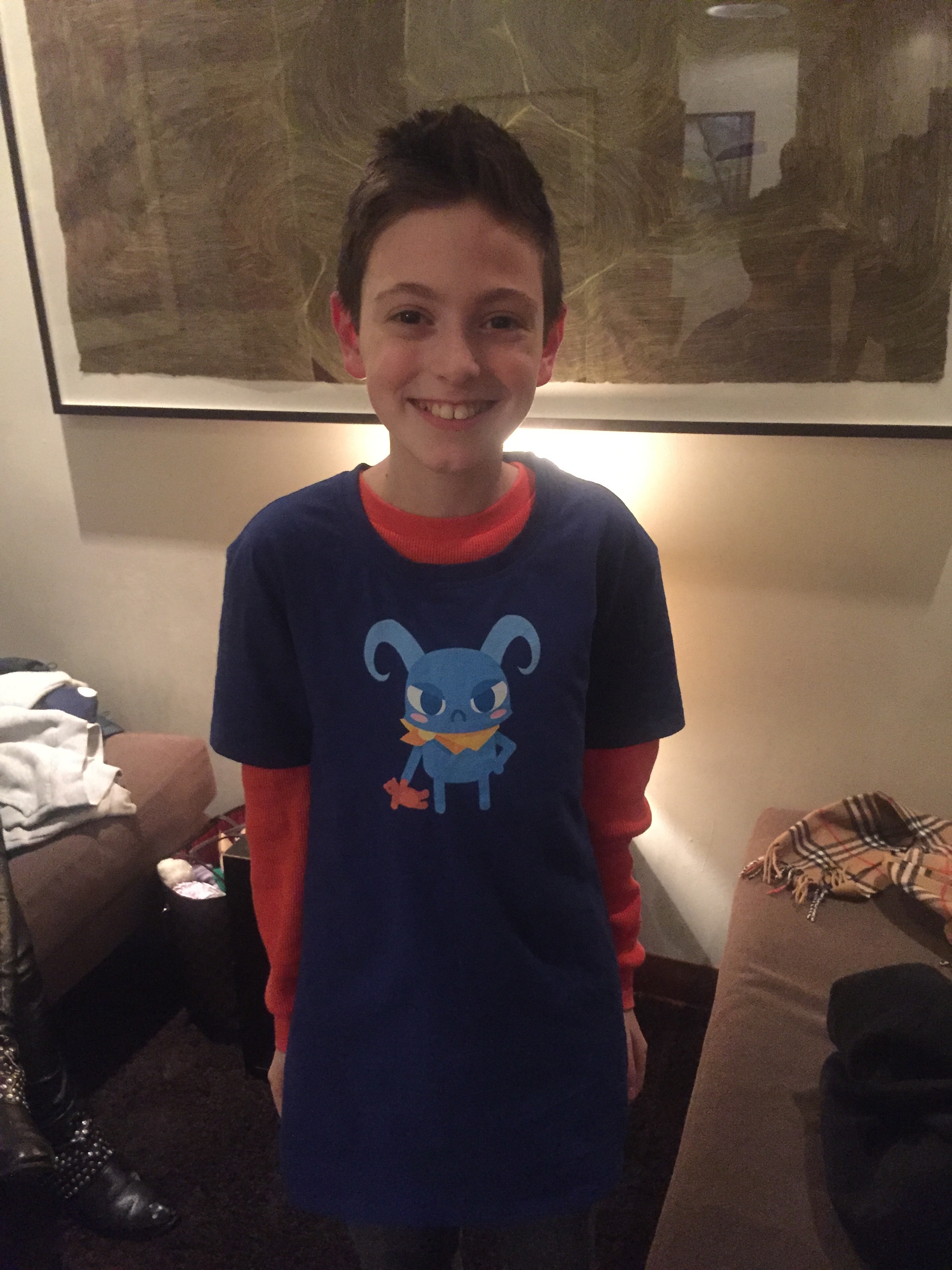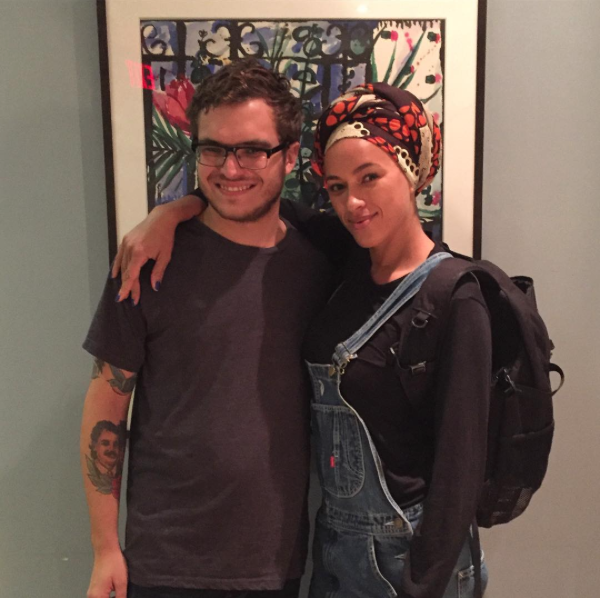Dubway engineer Adrian Thorstensen recently recorded voice-over narration with actor Johnny Lancaster for Puppies Vs. The World.
Produced by LION TV, Puppies Vs. The World is a new special to be aired on the National Geographic channel.
Dubway engineer Adrian Thorstensen recently recorded voice-over narration with actor Johnny Lancaster for Puppies Vs. The World.
Produced by LION TV, Puppies Vs. The World is a new special to be aired on the National Geographic channel.
One of the services we offer at Dubway Studios is the option to record in collaboration with remote studios. We do this by using Source Connect, an industry-standard remote-recording solution for audio recording and monitoring needs. With Source Connect, Dubway is able to access thousands of studios and talent world-wide with secure, reliable connections over the internet.
This week, engineer Adrian Thorstensen had an ADR session with post-production studio Piste Rouge in Paris, France, with the voice talent in our New York City studio. Piste Rouge is tasked with audio post for this project, a web series destined for television.

Earlier this fall, Dubway facilitated the VO audio recording for an Elijah Craig Bourbon spot with XenoPsi ad agency. Engineer Sam Palumbo connected with voice-over talent Mike Doran, in St. Louis, via Source Connect.
Elijah Craig is a premium brand of bourbon whiskey produced by the Heaven Hill Distillery company.

Zac on set of Six Degrees of Murder.
This fall, Dubway engineer Zac Suskevich recorded audio on set of Investigation Discovery's Six Degrees of Murder. Dubway is also providing the voice-over recordings for the program in studio.
Produced by LION TV, Six Degrees of Murder is a true-crime series that explores "a closer look at murder investigations that required law enforcement to untangle a complicated web of relationships in order to uncover the truth." The television program is broadcast on the network Investigation Discovery, with new episodes on Wednesdays at 10/9c.

The voice of Nash at Dubway Studios
This week, Dubway worked on voice-over recordings for The Polos, the new children's short-form series by kids media company MarcoPolo Learning.
The show is based on MarcoPolo's game characters, now starring in a new medium of video shorts for mobile platforms. Aimed for kids 3-7 years old, the shorts star "four familiar characters — Willow the bunny, Chester the deer, Nash the baby ram and Gorby the hippo — along with newcomers Marco the bear and Lily the Tiger as they emerge from their mobile devices to see the real versions of the things they’ve learned about in the app games. The quirky group of friends, just as relatable and flawed as real kids, are on an epic road trip to learn all they can about the natural world. The series blends animation and HD live footage."

This week, Dubway engineer Zac Suskevich worked with producers from Eventbox to record voice-overs for Tom & Jerry: Live!
Eventbox, based in Dubai, produces live children's shows for theaters in the Middle East, North Africa, and Eastern Europe. With guidance from Warner Bros., their latest show Tom & Jerry Live, is a global collaboration with its creative producer from London (Lianne Bruce), costume designer in Australia (Johnathon Gowlland/Sparklight), musical director in Lebanon (Walid Sarouh), sound engineer in Serbia (Stefan Djinovic) and Antoinette DiPietropolo directing the voice talent here in NYC.
Zac has been working closely with Antoinette and her lively cast of actors and actresses, Skyping in with the other members of this production, working remotely from across the globe.
Tom & Jerry Live is a stage adaptation of Warner Bros.' classic TV show, Tom & Jerry, about two kids who bicker and fight, after playing a Tom & Jerry video game, enter the game and find themselves in the world of the crazy characters.

There are lots of ways and lots of reasons to synchronize audio/video workstations. No matter if you're syncing two Pro Tools systems, Logic to Ableton Live, or an old-fashioned video deck and Nuendo, the concepts are the same. Clock reference determines how fast everything is going. You can get clock from an AES/EBU signal, a video signal, or even an optical audio signal. Clock keeps systems from drifting. Positional reference tells the systems where they are. System A says "I'm at 1 hour, 12 minutes, 3 seconds and 19 frames... NOW!" And in each case you need to have a master and a slave.
Today, I sent old-fashioned LTC (longitudinal timecode) from Pro Tools on my laptop (the master) to the SYNC I/O connected to our desktop Pro Tools system (the slave). As long as the desktop system was online (flashing clock in the transport), it responded as the slave.
But there was an important oversight: I didn't connect the word clock output of the laptop/Ensemble to the word clock input of the SYNC I/O, so my demonstration was lacking a common clock reference. Next time, I promise!
Reading the manual on the train tonight, I was happy to discover that our old SYNC does support the HD video frame rate of 23.976: "The 24 fps LED flashes to indicate 23.976 fps." Which is exactly what we saw went I sent 23.976 LTC.
Homework: I've been reading up on RTS (Remote Transport Sync), which is a proprietary method of synchronizing two Source Connect systems over the internet. To make it work, you must instanciate the "Se ReWire" plug-in in Pro Tools so SC and PT can speak positional reference.

Engineer Sam Palumbo with Linus Roache
We had the pleasure of welcoming actor Linus Roache into the studio to record audio commentary for two episodes of Vikings. Joining him in the commentary was Michael Hirst, creator/writer of the HISTORY Channel series, who recorded remotely from London. Dubway engineer Sam Palumbo facilitated the remote collaboration with Hirst via Source Connect with video sync. Producer of the commentaries, Mike Brosnan of Space150 in Los Angeles, participated via Skype.
Linus Roache is an English actor widely known for his roles as Dr. Thomas Wayne in Batman Begins, as Mike Cutter in Law & Order, and most recently as King Ecbert of Wessex in the HISTORY Channel's hit original series Vikings.
Vikings is an Irish-Canadian historical drama television series written and created by Michael Hirst that "transports us to the brutal and mysterious world of Ragnar Lothbrok, a Viking warrior and farmer who yearns to explore—and raid—the distant shores across the ocean." New episodes air on Wednesdays at 9/8c on HISTORY.
Mike Colter, famously known for his role as Marvel's Luke Cage on Netflix, stopped by the studios last week to record voice-over to video for National Geographic's series, "Breakthrough."

Our stellar production audio team recently went on location for the shoot of a horror film (working title The Haunting Of) from executive producers James Franco and Jay Davis.
Inspired by a selection of stories written by Edgar Allen Poe and Decameron, The Haunting Of is a "psychological thriller [that] follows a group of young filmmakers as they compete in a film festival held by the wayward heir of a late cinema auteur. As alliances form between the filmmakers, a mysterious figure begins to emerge - could this land be haunted, or are the filmmakers becoming their own worst nightmares?"
Stay tuned for a 2017 release.

Engineer Zac Suskevich and Michelle de Swarte
Michelle de Swarte Came in this month to record VO for the TV show "World of Weird". "World of Weird" is a show that spans the globe in a bid to bring you its strangest, weirdest and most bizarre people and stories. From Australian artists who paint solely with their penis to Japanese agencies that specialise in getting your workforce together for a good organised cry, via real American Vampires to German dominatrixes whom men pay to crush them half to death between their thighs - if it's out there and a little (or a lot) weird, it's in the show.
Michelle de Swarte is a talented model and television personality. She currently resides in New York where we remote recorded with her for the show.

This month Mark Duplass and Issa Rae came in to the studio to be recorded for the Modern Love Podcast. Modern Love is a collaborative podcast between Boston's WBUR and New York's NPR. It features the popular New York Times column, with readings by notable personalities and updates from the essayists themselves. Join host Meghna Chakrabarti and Modern Love editor Daniel Jones.
Mark Duplass is an American film director, film producer, actor, musician, and screenwriter. He is a founder of the film production company Duplass Brothers Productions and has directed films such as The Puffy Chair (2005), Jeff, Who Lives at Home (2011), and The Do-Deca-Pentathlon (2012).
Issa Rae is an American actress, writer, director, producer and web series creator. She is known as the creator of the YouTube web series Awkward Black Girl. Issa is the creator, co-writer and star of the HBO series Insecure, which is partially based on Awkward Black Girl. Insecure airs on HBO Sunday's at 10pmEST.

Mastered for iTunes (MFiT) is less complex than it seems. Click here for Apple's documents and droplets for diving deep. I recommend reading them all. But here's the short version:
Apple figured out a way to make AAC encoding sound better in some ways than CD. To do it, Apple has to feed the encoder mixes that are at least 44.1Khz/24-bit. 96Khz is preferred, but 44.1 is tolerated. Must be at least 24-bits. When you're close to done mastering, you run your mix through afclip in the Terminal app, which will tell you if your mix will clip on AAC decode (the decode happens when users are listening to iTunes or their iPhones).
After some experimentation, I found that I needed to leave at least -0.7dbfs headroom on my mixes, and sometimes even more (I did -1.5dbfs recently which is a lot). This is contrary to the old CD-mixing advice which was to push the mix way up to the ceiling, like -0.3dbfs. Those mixes will fail MFiT.
You can also "round-trip" your mix by using the AAC>WAV droplet and sending the file back into Pro Tools. This will let you A/B the process. There you can cancel the two mixes and then really hear what AAC is (AAC always sounds like a swishy fish tank to me when I do this, but a good swishy fish tank).
Check out the docs and let me know if you have any questions.

Adrian and I are marking down the listening level for mix sessions. This can be really helpful to you and to clients when you're working on the same project over multiple sessions. Everyone gets accustomed to what "loud" sounds like in the room, and as you get used to it, you can take your eyes off the meters and your ears will tell you if you're in spec.
To do it, download the calibration files from the ATSC (Advanced Television Systems Committee). Put "MidRngPinkNoise_-20dB.wav" on a new track in your session, and set the fader for unity gain (make sure the master fader is also at unity gain). Then pan it hard to one speaker and play it in loop mode. Get an SPL meter, set it to C weighting, slow mode, and hold it at the listening position, but pointed to the loudspeaker. Turn the gain knob on your monitor up and down. You might find that working on a mix for the web, or on a music mix that you're in the 65db range. I discovered that our television clients like to mix at 73db, some of our film clients like it at 77db. Crazy-dynamic film mixes in bigger rooms than ours can be set to 85db.
Keep in mind that calibrated levels are not terribly important for tracking. But they're great for mixing. And if you're disciplined, you can set the level at the start of a project and never change it. This will result in more consistent mixes without any guesswork.
This month, Dubway engineer Sam Palumbo got to work with Lauren Miller Rogen, recording ADR for "Bun in the Oven".
"Bun in the Oven" is Twisted Short's third film in The Fluid Trilogy, a series of twisted, subversive & delightfully disgusting short comedies.

The first film in the series, ”Bloody Mary”, has been accepted into more than 20 festivals all over the world, winning “Best NYC Film” at the NYC Downtown International Short Film Festival; “Best Screenplay” (shorts category) at the Macabre Faire Film Festival in Long Island, NY; “Single Funniest Moment” at the Austin Comedy Short Film Festival; and runner-up for “Best Comedy” at the Rugged Phoenix Underground Film Festival. Twisted Short’s follow-up film ”Sucklepump” is just starting the festival rounds and has been accepted into 6 festivals. Cast members have included Lauren Miller Rogen (For a Good Time Call), Trace Lysette (Transparent and Blunt Talk), Joel Marsh Garland (Orange Is The New Black), and Pat Squire (Orange is the New Black).

I've often wished that every time an engineer created a new Pro Tools session that a big window popped-up and asked "Plug-In Controls Default to Auto-Enabled?" This preference box is unchecked by default, but is absolutely essential for modern mixing workflows.
Let's imagine Al is mixing dialog, with maybe an EQ, de-esser and compressor in the chain, and then he gives me the session. I keep mixing, but then I notice that the de-esser threshold is too high for one line, but everything before it sounds fine. If I pull the threshold down, it will affect everything before it, so it must be automated. But just looking at the plug-in, I have no way of knowing whether or not the threshold parameter has been auto-enabled!
To keep from going insane, I auto-enable absolutely everything in a session, but start a mix in auto-suspend mode. In auto-suspend, you can tweak, fiddle and play for hours, and then when it starts to sound good, use write-to-all-enabled for all tracks and turn off auto-suspend. This will lock your mix in, and give you the freedom to make moment-to-moment tweaks.

I've been reading about AVB, Dante, AES67 for a while, but didn't really understand what was going on until now. Here's what I discovered over the last few days:
AES67 is a standard for pushing hundreds of channels of totally pro audio over Ethernet. Dante is a commercial implementation, and AVB is a related implementation (which MOTU and Avid are deep into). I downloaded the Dante Via demo software, which lets you send audio between applications on a Mac. It's very cool. Pro Tools can use Dante as a playback engine.
You can also test Dante Virtual Soundcard. This lets you plug your Mac's ethernet cable directly into all of these zillion devices without using USB, Firewire, Thunderbolt or PCI cards! There's no doubt in my mind that all the young engineers will need to understand it in the years to come.
From Toronto, Treehouse TV's producers remotely directed Emmy award nominated voice actor, Dwayne Hill, for the upcoming season of their show Ranger Rob.
Ranger Rob is Treehouse's enthusiastic, adventurous hero, and he's all about getting outside to play and explore! Ranger Rob zip-lines, vine-swings and even snowboards his way around, discovering new and exciting places in his own big backyard – Big Sky Park, the coolest outdoor adventure park ever!

Sam Palumbo has pleasure of working with Trish Nelson for the new BanterGirl Live Podcast. BanterGirl Live features intelligent, multi-cultural women, comedians and icons who have been inspirations for women in the entertainment industry and beyond.
Trish and her company BanterGirl are the recipient of the “2016 Public Theater “Pub Club Award,” a program that focuses on helping emerging and established artists develop a particular project. Through her company, Trish is committed to creating work that focuses on women, while helping to lift and launch diverse female talent and shine a light on the female voice.
You can find Trish Nelson and BanterGirl on Twitter, Facebook, and the BanterGirl website.

Rashid Ramkissoon was on set this past week recording location audio for the new documentary on Cakes Da Killa. The documentary features interviews and performances by Cakes where he explains what it is like to be a black homosexual rapper in our culture. The Documentary is sponsored by ATTN and the interview and performance were tracked at Aviv Club in Brooklyn, NY.
Recording artist and raunchy rapper Cakes Da Killa is a 24-year-old with three critically-acclaimed mixtapes to his name. His unique sound is a mix of various musical influences, cinema and underground experiences.